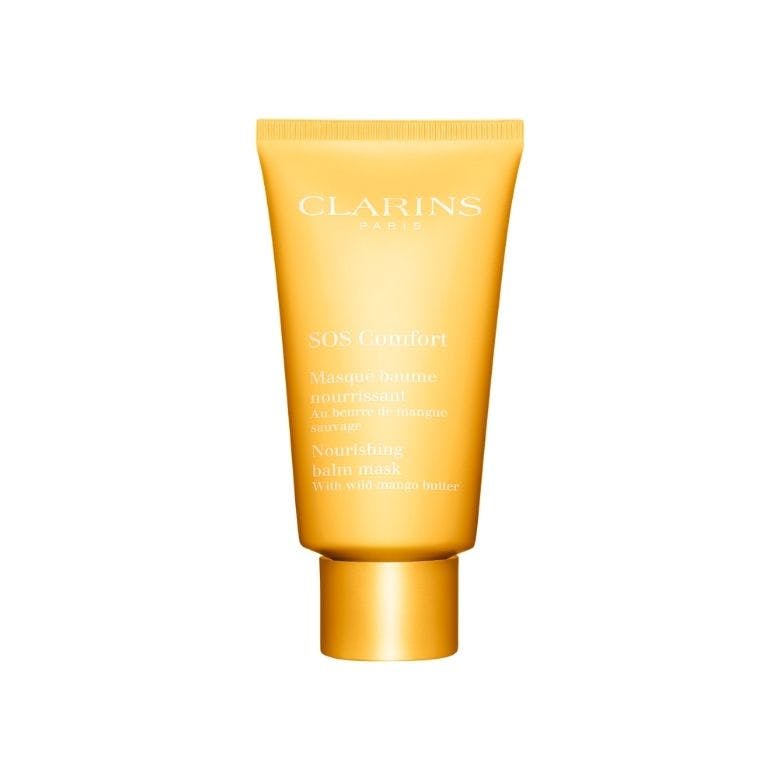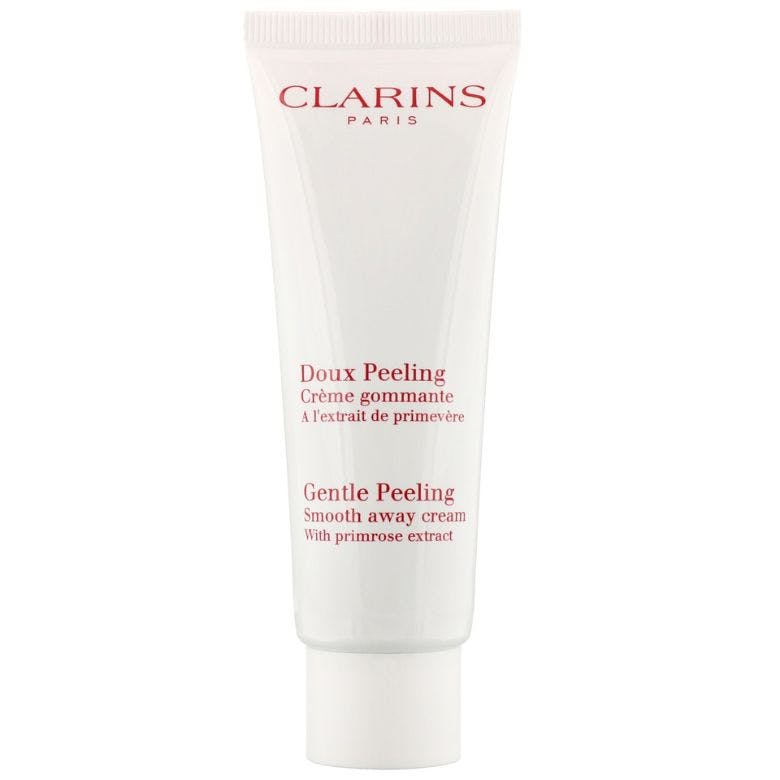Facialist-Recommended: Your Ultimate Guide To Effective At-Home Skin Exfoliation
7 minutes read
Do you come out of every professional facial wondering how to exfoliate your skin to achieve the same glow? You’re not alone. With over 658,000 hashtags on Instagram, the buzz around ‘exfoliation’ is real. Projections indicate that the global exfoliator market is poised to exceed £1.9 million by the end of 2027.
In our conversation with Charlotte McHale, Clarins Training Manager, we uncovered her insider tips for achieving skin that is not only healthy but also irresistibly silky through the art of skin exfoliation.

Why exfoliate skin?
Understanding the importance of skin exfoliation goes beyond just unclogging pores and fending off acne; it’s the secret to achieving that coveted smooth and radiant glow. Picture it as your skin’s dedicated cleanup crew, diligently removing dead cells every 30 days. But, here’s the hitch – not all cells bid farewell gracefully, leaving your skin feeling congested, dry, and somewhat lacklustre.
Enter skin exfoliation, your trusty ally for a much-needed refresh. It’s like a revitalizing reset button, giving your skin the tender loving care it craves. And it doesn’t stop there – it’s a catalyst for collagen production, ensuring your skin remains radiant and in peak condition.
As a bonus, by exfoliating skin, you pave the way for your serums and moisturisers to work their magic, seeping into your skin and delivering their full potential. Consider it a little self-care ritual that leaves your skin not just happy but healthy and positively glowing.
Read next: Why Collagen Is So Important To Skin Survival
How to exfoliate skin properly
McHale recommends using a mixture of chemical and physical skin exfoliators to get the best results from your skin exfoliation. “A method often used professionally is the combination of a chemical and physical exfoliant in one treatment,” she says.
“Start by mixing a dollop of your favourite scrub with a few drops of liquid exfoliator. This technique works well because the liquid exfoliator helps break the ‘bonds’ between dead skin cells that keep them attached to the skin’s surface. The physical skin exfoliator will then gently buff them away,” McHale continues.
Start with cleanser
Before starting the skin exfoliation process, it’s crucial to ensure that your skin is thoroughly clean and free from any makeup, gunk or grime. This preparation enhances the effectiveness of your skin exfoliator, allowing it to work more efficiently.
Read next: The Benefits of Double Cleansing
Create an exfoliator hybrid
Combine a coin-sized amount of your facial scrub with three drops of liquid exfoliant (containing AHA or BHA ingredients).
Get scrubbing
“Use the tips of two fingers to skin exfoliate in small circular motions,” McHale advises.
“Take your time and make sure you aren’t being too abrasive with your skin and ensure that you cover every area of your face so that you’re not left with smooth and dry patches,” she adds.
This method is safe enough to use once a week on normal skin types, but if you have sensitive skin, you should be more cautious of how often you are skin exfoliating and what you are exfoliating with.

For those with dry and sensitive skin, consider trying one of the best exfoliators for sensitive skin, like Comfort Scrub, £26. This formulation includes wild mango butter, offering soothing and nourishing properties. On the other hand, if you have an oilier complexion, we recommend choosing an exfoliator for oily skin, such as Pure Scrub, £26, renowned for its effectiveness in mattifying and eliminating excess oil.
For a quick fix, we recommend One-Step Gentle Exfoliating Cleanser, £24, This is a quick fix, providing effective skin exfoliation and a youthful glow.
Keep away from your eyes
McHale also advises you to be extra careful when exfoliating skin around your eyes. “Both physical and chemical skin exfoliators are too harsh to be used around the delicate eye area, so make sure you keep clear of it when exfoliating. If you want to exfoliate around your eyes, use a gentle peeling cream, such as Gentle Peeling Smooth Away Cream, £26, which can be applied to the skin and left for one minute before using your fingers to wipe away any dry skin gently,” she says.

Clarins Gentle Peeling Smooth Away Cream, £26
Follow up with serum and moisturiser
An effective skin exfoliation routine maximises the benefits of any products you apply afterwards. Following the skin exfoliation process, apply a serum and moisturiser to restore moisture and deliver essential nutrients to the skin. This post-exfoliation skincare step enhances the overall effectiveness of your skincare routine, ensuring your skin receives optimal hydration and nourishment.
Remember to wear SPF
McHale explains that after skin exfoliating, “wearing SPF is extra important”. Because the ingredients in liquid exfoliants leave your skin more prone to sun damage, it’s essential to protect it at all costs; otherwise, you may face adverse effects.
Read next: Can You Reverse Sun Damage?
How to exfoliate dry skin on the body
Our skin can get seriously neglected, particularly during winter when it’s constantly covered up. And while it’s tempting to skip that part of your body beauty regime when you’re layering up with cosy knits and thick winter clothes, if you care for your body skin all year round, you won’t have as much work to do come summertime. Plus, skin exfoliating our skin can help unclog pores, boost circulation and encourage lymphatic drainage, reducing common issues such as ingrown hairs and bumpiness. Just like the skin on your face, your body will benefit from scrubbing in gentle, circular motions.
You can also use a combination of chemical and manual exfoliators – we love Exfoliating Body Scrub, £32. Want to know how to exfoliate skin naturally? Mix four tablespoons of brown sugar with a teaspoon of honey, a tablespoon of almond oil and four drops of lemon oil. Stir it all up, slather it all over your body and lightly scrub upon application. Wash it off using warm water, and et voila – silky smooth, dry patch-free skin.
The skin on your feet can become really dry, thick and even cracked, especially on your heels. Keep them smooth and groomed with a good foot exfoliation routine.
And don’t forget to get rid of your old, patchy fake tan.
How to exfoliate eczema skin
Eczema-prone skin can be exfoliated; however, it must be rubbed up the right way, sparingly and non-abrasively. Be sure to clean the skin with water or a mild cleanser first before using a mild skin exfoliator. Use very gentle circular motions, and don’t over-exfoliate for longer than 30 seconds – doing so may risk causing extra irritation to your sensitive skin. Follow up with your eczema-friendly moisturiser of choice to replenish hydration and moisture.
Over exfoliation
Over-skin exfoliation can compromise the skin’s moisture barrier, leading to dryness, irritation, inflammation, and increased susceptibility to acne. Skin experts advise limiting skin exfoliation to three times per week and exercising caution regarding the pressure applied during the process. This approach helps maintain the skin’s health and balance, preventing potential adverse effects associated with over-exfoliation.
How long for over-exfoliated skin to heal?
It can take up to six weeks for over-exfoliated skin to heal, but there are things you can do to speed up the healing process. First, ensure that you only use mild, gentle facial products during this time, as well as rich emollient creams or aloe vera gel. It’s also a good idea to apply SPF religiously to protect your skin from more damage. For an over-exfoliated body, try Moisture Rich Body Lotion, £36.
Next read: How To Get Natural-Looking Glass Skin
Skin exfoliation FAQs:
When should I exfoliate in my skincare routine?
It’s recommended to skin exfoliate after cleansing. This ensures that your skin is free of dirt, oil, and makeup, allowing the skin exfoliant to work effectively on clean skin. This sequence optimizes the exfoliation process for better results and contributes to a healthy skincare routine.
How often should I exfoliate my skin?
Ideally, exfoliate skin two to three times a week. This frequency strikes the right balance – enough to remove dead skin cells effectively without risking over-exfoliation. Achieving this balance promotes a radiant complexion without irritation or dryness.
Feeling overwhelmed by the multitude of steps in a skincare routine? Check out The Right Skincare Routine Order and Steps to Follow for a clear guide on creating an effective and streamlined skincare regimen.
Sign up for our newsletter
We will keep you in the loop for special offers, exclusive gifts and product news.

